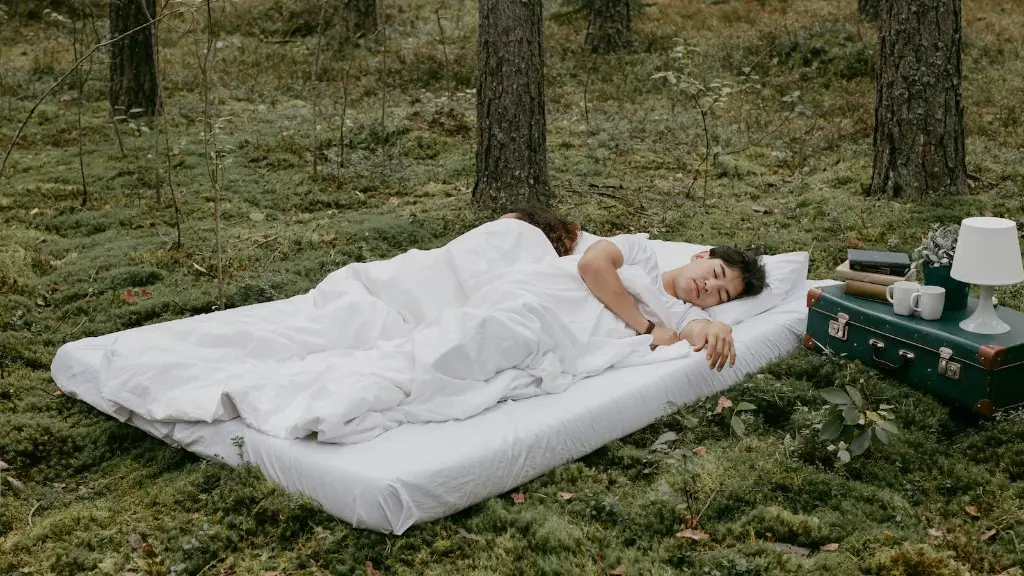It’s common for people to see faces in their dreams. In fact, our brains are wired to recognize faces. We can even dream about faces that we’ve never seen before. So, if you’re seeing a face in your dream, it’s likely your brain is just making it up.
There is no definitive answer to this question as everyone experiences dreams differently. Some people report seeing familiar faces in their dreams, while others see completely made up faces that they have never seen before. It is difficult to say definitively whether or not our brains can make up faces in dreams, as it is such a personal experience.
Can your mind make up a face in your dream?
There is a popular belief that the human brain is incapable of “creating” a new face, and that every person you dream of is someone you have either known personally or merely came across looking through your friend’s Facebook photos. However, recent studies have shown that this may not be the case. The brain is actually capable of creating new faces, and it is believed that this ability is used in order to process and store information about the people we encounter in our everyday lives. So, if you find yourself dreaming of a new face, don’t be alarmed – it’s just your brain doing its job!
REM sleep is a special state of sleep in which the brain is highly active. This is due to a specialized set of neurons that pump activity straight into the brain’s visual cortex, causing us to experience vision even though our eyes are closed. This activity in the visual cortex is presumably why dreams are pictorial and filmic.
Is it possible to dream about someone you’ve never seen
This is an interesting topic to explore. It seems that when we dream about people we’ve never met, they could be representing someone we don’t want to see. There could be many reasons for this, and it’s definitely something worth exploring further. Thanks for bringing this up!
The blind dream just like everyone else, but their dreams are different. For example, they may experience more sensations of sound, touch, taste, and smell than sighted people do. Additionally, blind people are more likely to have certain types of dreams than sighted people.
Where do faces in dreams come from?
There is some scientific evidence to suggest that our mind is not inventing faces in our dreams, but rather we see real faces of real people that we have seen during our life but may not know or remember. This theory is based on the fact that we have all seen hundreds of thousands of faces throughout our lives, so we have an endless supply of characters for our brain to utilize during our dreams.
For people with normal vision, dreaming is an intensely visual experience. The dream state typically involves vivid scenes and imagery, much of it drawing upon our daytime experiences and concerns (whether conscious or not). Auditory stimulation plays a small role, and the other senses, like taste and smell, are virtually absent.
Why do we forget our dreams?
”
REM sleep is a stage of sleep when the brain is active and dreams typically occur. MCH cells are active during REM sleep and may prevent the content of a dream from being stored in the hippocampus, resulting in the dream being quickly forgotten.
Pain can be a part of the dreaming world for some people, although it is not experienced by everyone who dreams. Research has shown that pain sensations occur in about 1% of the dreams in healthy persons and in about 30% of patients with acute, severe pain. This suggests that pain is a potential part of the dreaming experience for many people, although it is not always present.
Can you control your dreams
Lucid dreaming can be a very powerful tool for healing and growth. When you are aware that you are dreaming, you can often control the dream’s storyline and environment. This can be very helpful in treating conditions like recurring nightmares and PTSD. Lucid dreaming can occur during REM sleep, which is when most dreams occur. When used in therapy, lucid dreaming can help patients work through their trauma and explore other aspects of their lives that they may be struggling with.
There is no definitive answer to how long a dream can last, as it can vary greatly from person to person. Generally speaking, however, dreams tend to last for a few seconds up to around 20-30 minutes. People are more likely to remember a dream if they are awakened during the Rapid Eye Movement (REM) phase, which is when most dreams occur.
Can a deaf person hear in dreams?
The study found that those who were congenitally deaf had dreams that were entirely visual. However, those who lost their hearing later in life reported dreaming with both visual and auditory elements. The auditory dreaming was less common and not as vivid as the visual dreaming.
The study showed that deaf people do dream, but their dreams are different from those who can hear. Dreams are mainly visual for those who are congenitally deaf, while those who lose their hearing later in life may have both visual and auditory dreams.
There are many different forms of blindness, and each one presents its own challenges. One form of blindness is light perception, which is the inability to see different sources of light. This can be a very difficult form of blindness to deal with, as it can make it very difficult to navigate your surroundings. Another form of blindness is tunnel vision, which is the inability to see anything beyond a very small area. This can be very dangerous, as it can make it difficult to avoid obstacles or see potential hazards. There are many other forms of blindness, and each one presents its own challenges. If you or someone you know is blind, it is important to be aware of the different types of blindness and the challenges that come with each one.
Do people dream in color
What the research found was that when people were carefully interrogated about their dreams close to the time they had them, colors were present in 827% of cases. Another study found that 69% of people reported dreaming in color after being awakened during REM sleep. This suggests that colors are quite commonly reported in dreams.
There are a few reasons why Dream might cover his face when he’s on camera. One reason could be that he’s not the most secure person and doesn’t feel comfortable being on camera. Another reason could be that he thinks face cams are awkward. Whatever the reason, it’s understandable why Dream would want to keep his identity hidden.
What does it mean if you can’t see faces in dreams?
Faceless people in dreams remind us that we are all the same on the inside. We should judge others by their actions, not by their appearance. We are all basically faceless souls, and it is by our actions that we should be judged.
Individuals with hyperphantasia have extremely vivid and realistic mental imagery. This can lead to confusion with reality, as the individual may mistake their mental images for actual experiences. This can be a debilitating condition, as it can make it difficult for the individual to distinguish between what is real and what is not.
What is a minds eye
The mind’s eye is a powerful tool that can help us visualize things that we otherwise may not be able to see. When we use our mind’s eye, we are able to see things in our imagination that we may not be able to see in real life. This can be a helpful tool in many different areas of our lives, including when we are trying to learn new things or solve problems.
Seeing a mirror in your dream can symbolize a number of different things. If you see yourself in a mirror, it can suggest that you are reflecting on your own actions and behaviours. Alternatively, it could be a sign that you are not being true to yourself. If the mirror is broken, it could represent some sort of illness or injury. Finally, if you see someone else in the mirror, it could be a sign that you are not seeing that person clearly.
Warp Up
There’s no definitive answer to this question since everyone experiences dreams differently. Some people report seeing familiar faces in their dreams, while others say they see completely unfamiliar faces. It’s possible that our brains generate new faces in dreams, but it’s also possible that we simply draw from our existing memories when creating dream images.
While scientists are not sure why we dream, they do know that dreams serve an important purpose in our lives. Dreams help us process information and sort through memories. Dreams also allow us to practice skills and work through problems. Our brains are very active when we dream, and they are constantly creating images and stories. Sometimes, our brains can create images of faces that we have never seen before. This is because our brains are constantly processing information and trying to make sense of the world around us.





